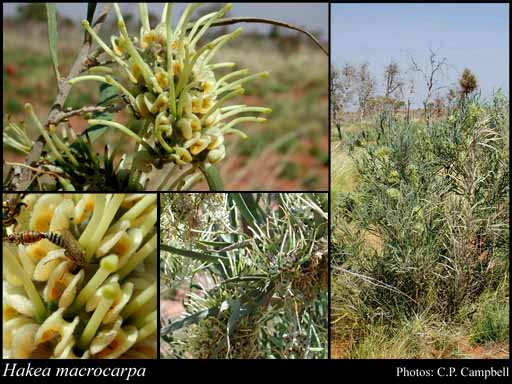- Reference
- Prodr. Suppl. 30 (1830)
- Conservation Code
- Not threatened
- Naturalised Status
- Native to Western Australia
- Name Status
- Current
Tall shrub or tree, 1-6 m high. Fl. cream-green-yellow, May to Aug. Red sandy soils. Coastal sand dunes, rocky ridges, sandplains.







Scientific Description
Trees, 1-6 m high; branchlets glabrous or hairy. Leaves alternate, (50-)90-240(-350) mm long, 3-10 mm wide, hairy or glabrous; lamina flat, widest around the middle, entire. Inflorescences axillary, cream; pedicels 4-8 mm long. Perianth 8-13 mm long, hairy; ovary glabrous; pistil 18-26 mm long, pollen presenter oblique, style glabrous. Follicles 22-40 mm long, 14-17 mm wide, corky tetrahedral projections (on external surfaces of fruit) absent; seed 18-37 mm long (including wing), 9-14 mm wide, the wing discontinuous, marginal, extending down one lateral side only. Flowers in May, June, July or August. Occurs in the Northern (N) or Eremaean (ER) Botanical Province(s), in the Great Sandy Desert (GSD), Pilbara (PIL), Central Kimberley (CK), Dampierland (DL) or Ord-Victoria Plains (OVP) IBRA subregion(s).
Distribution
- IBRA Regions
- Central Kimberley, Dampierland, Great Sandy Desert, Northern Kimberley, Ord Victoria Plain, Pilbara, Tanami.
- IBRA Subregions
- Chichester, Fitzroy Trough, Mackay, McLarty, Mitchell, Pentecost, Pindanland, Roebourne, South Kimberley Interzone, Tanami Desert.
- IMCRA Regions
- Kimberley.
- Local Government Areas (LGAs)
- Broome, Derby-West Kimberley, East Pilbara, Halls Creek, Port Hedland, Wyndham-East Kimberley.